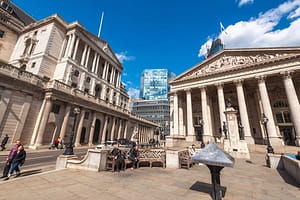As debate rages over tax cuts for top earners, I explain why everyone will benefit from the move
There is no evidence the 50 per cent rate raised revenue
The economist Art Laffer got Ronald Reagan to cut taxes by drawing a graph on a napkin. It showed that if you tax at 0 per cent you raise zero pounds, and if you tax at 100 per cent you also raise zero pounds because no one bothers to work. The lesson is that there is a maximum tax rate which can be charged, above which revenues fall.
And where is this peak? In this informal survey of economists in the US estimates ranged from 19 per cent to 70 per cent.
And in the UK? Now this is a hell of a debate. The CEBR says the optimum rate is 38 per cent. Other reports say higher. Polly Toynbee, with apparently no empirical research, declares “revenues don’t fall away until closer to a 70 per cent rate.” The chancellor today said that a new HMRC report revealed the revenue difference between a 45 per cent rate and a 50 per cent may be “nothing at all”.
The Institute for Fiscal Studies concludes: “Rarely has there been such a wide debate about an issue of tax policy based on so little empirical evidence as there has been over the 50p income tax rate applying to incomes above £150,000”.
Since there is no evidence that the tax raises money, it should be axed.
No chancellor should be imposing taxes merely on the serendipitous off-chance that they will work out for the best.
The Laffer Curve gets worse with time
When taxes go up it takes a while for taxpayers to respond. As months and years pass they become more adept at avoiding tax, and at finding ways of leaving the jurisdiction altogether. Not only could the top rate be not proven to raise money today, but whatever the situation is right now, it will get worse with each passing year.
It could be seen as a form of slavery
Article 4.1 of the European Convention on Human Rights declares: “No one shall be held in slavery or servitude.” And how do we define slavery and servitude, if not being forced to work primarily for the gain of others? The 50 per cent rate seems like a significant threshold. Rights exist to protect citizens from an overbearing State. In taxation terms, the legal limit permissible under Article 4.1 could well be argued to be at the 50 per cent mark. One for the human rights activists to take up?
The libertarian objection
Libertarians ethics are out of fashion at the moment, but underpin much of British common law. You don’t have to be a hard-core Nozick acolyte to believe that there are ethical limits to the amount the state can legitimately appropriate from any single individual. Not a popular view in the UK right now, I’ll grant, but one any rounded debate ought to consider.
It was way more than 50 per cent
Factor in corporation tax, VAT, fuel duty, beer duty, stamp duty and all other stealth taxes and the total amount paid by high earners was considerably higher than the headline rate.
Deadweight costs are significant
When taxes rise the incentive to work is diminished. A 50 per cent rate of tax doesn’t just encourage avoidance (legal measures) and evasion (illegal), it persuades many workers to retire early, to stop working through the year when they have hit a certain income level and to slack off their work rate. This lowering of economic activity is called the “deadweight cost” of tax.
Unfortunately it is incredibly hard to measure deadweight costs. After all, how do you record the fact that a surgeon retired a year earlier than planned because he decided that another’s years labour was not, on balance, financially attractive?
It was making Britain uncompetitive
The ability to impose high taxes depends, in part, on what other rival nations charge. Tax cuts abroad have mean that UK entrepreneurs are more sensitive to higher rates at home. Income taxes are only part of the picture, but since 1997, the UK has dropped from 4th position to 95th in the World Economic Forum’s tax competitiveness ratings.
The 50% top rate made the UK the highest tax regime in the G20 for top earners, as you can see from the chart below:
Source: CEBR
It hurt sports teams
Usain Bolt refuses to perform in the UK because of our tax rates. Golfers like Sergio Garcia shun our golf tournaments. And Michel Platini cited our tax rules as a reason why Wembley has missed out in the past on hosting the Champions League final. Sport is more than panem et circenses for the masses: it is a booming global industry which the UK can dominate, given the right business environment. The cut will help us do that.
It was only a temporary measure
When Labour introduced the 50 per cent top rate in the 2010, in the dying days of Gordon Brown’s reign as PM, it was billed as a short-term hike to deal with the deficit. Indeed it is telling that Labour are refusing to state whether they would reintroduce the tax. The cynical analysis is that Brown only introduced the tax so that Labour could insult the Tories when it was inevitably repealed.
Fairness
The assumption that “fair” tax changes necessarily hurt high earners and reduce the burden paid by low earners is necessarily flawed. The logical consequence of such “fairness” would be to increase taxes on the rich with every modification, until eventually high earners paid 100 per cent and the rest of the population paid nothing.
Tax cuts have a great pedigree in the UK
In the 1980s Howe and then Lawson cut the top rates of tax from 83 per cent to 40 per cent. The result was that the rich paid far more tax, both in absolute terms and as a percentage of all tax paid. In 1979 the highest 10 per cent of earners paid 35 per cent of income tax. By 2000 they paid just over half. The lower 50 per cent started off paying 18 per cent of all income tax, and ended up paying 11.6 per cent.
The rich already pay their way
The top one per cent of earners currently receive 12.6 per cent of total UK taxable income. They contribute nearly 28 per cent of total income tax revenue. No politician has got the guts to say it, but the 99 per cent of UK residents are already subsidised, to a massive degree, by top earners.
High taxes hurt social mobility
If you want to preserve the current allocation of wealth the best policy is to hike income tax. Why? Because it prevents ambitious upstarts from climbing the wealth ladder. When an East End barrow boy gets a job as a trader he has a chance of making enough cash to join the monied elite in Chigwell. But not if you stop him rising that ladder, by taxing him at punitive rates. Lower taxes help the poor but ambitious climb the wealth ladder, catching up those already ensconced at the top.
Taxes should not be used for social engineering
Who said: “I am not in favour of any tax as a matter of principle” and “personally I would always rather reduce any tax if you possibly can.” Answer: Ed Balls, on the Today programme in Septe
mber 2011. He was responding to Jim Naughtie’s suggestion that a 50p might be justifiable even if it didn’t raise money, by virtue of it’s impact on high earners.
In conclusion: cutting the top rate of tax is unproven to cost anything, may raise revenue, will deminish a variety of deleterious side-effects and makes our system fairer to the key demographic of taxpayers, namely the narrow tranche of highly productive individuals who actually pay more into the system than they take out of it. Bravo!
More like this
Cut 50p tax rate to help economy – LCCI
Business leaders urge Osborne to scrap 50p tax rate
City leaders rally: “Osborne must axe 50p tax rate to aid growth”
Boris on fiscal integration, the 50p tax rate and unemployment
Try our free newsletter





Leave a Comment